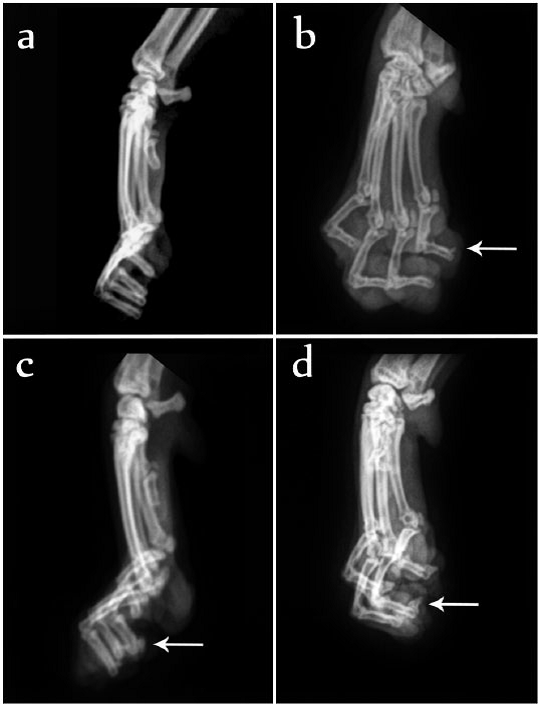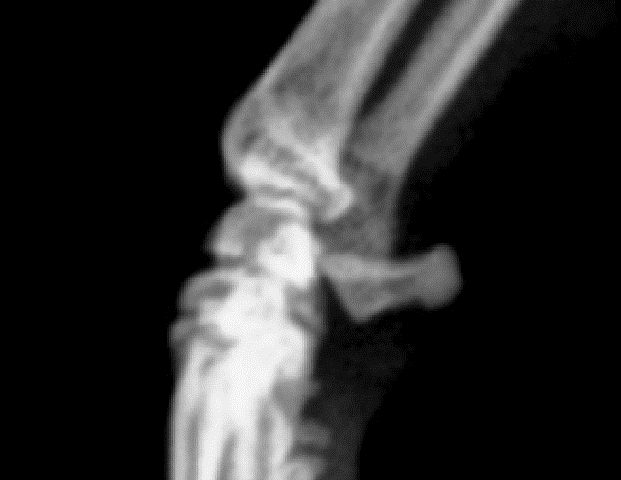
New Study Shows Declaw Surgery Contributes to Behavior Problems
In the past, shelters and rescue groups have insisted that a larger percentage of declawed cats were surrendered for aggression and inappropriate elimination issues than kitties with intact toes. The pro declaw forces always downplayed the assertion with, “Show the scientific proof.” Of course, that was impossible. No scientific proof existed because the research hadn’t been done. Thanks to a new study, led by Nicole K. Martell-Moran, DVM, MPH, we now have that proof.
Martell-Moran’s just-released study now supports those claims that declawed cats are at greater risk of developing deal-breaker behavior problems than cats with natural paws. Extrapolating from there, cats with biting and elimination problems are much higher risk of being surrendered to shelters than well-behaved cats.
The study, “Pain and adverse behavior in declawed cats,”was published online in May in the online Journal of Feline Medicine and Surgery. Until now, no studies that incorporated modern pain assessment of declawed cats could be found in a PubMed search.
This study’s purpose was to determine if there was any association between declaw surgery and back pain, as well as unwanted new behaviors such as inappropriate elimination, biting, aggression, excessive grooming. Martell-Moran also wanted to determine if pain-causing bone fragments left behind after the surgery were associated with those behavior issues. The research shows that the surgery has the unintended consequence of causing potentially more serious behavior problems. The study evaluated 274 cats—half declawed and half intact, 33 of whom were four-paw declaw.
It concluded there was a clear association between declawing and long-lasting and painful side effects of the surgery. Also the “the prevalence of P3 fragments in declawed cats was excessive and surprising.”
Onychectomy, the technical term for declawing, is commonly performed in the United States and Canada to prevent cats from scratching and destroying furniture.

Declaw surgeries are usually performed by using either guillotine cutters, dissection by scalpel or laser. Dr. Martell-Moran tried to determine the method used on each study cat, but that information was not always available. In those cases where she could determine the technique, there were some interesting revelations. She says all three techniques have the potential to leave behind painful bone fragments, but the guillotine most frequently left larger bone fragments that would regrow claw. This is not a painless process. Laser surgery and scalpel dissection occasionally left smaller and fewer fragments, but there is no guarantee the kitty still won’t suffer painful side effects.
Pain and Behavior Problems May Take Years to Appear
Back pain, inappropriate elimination, biting, aggression, and/or excessive grooming occurred more often in cats who had bone fragments, but declawed cats without the bone fragments were still more likely to pee outside the box and bite than intact kitties.
Because of the floating bone shards, cats change the way they walk. “If you wear high heels, it’s going to change the way you walk and your back is eventually going to hurt,” Dr. Martell-Moran said. She added back pain causes litter box problems because of the position the cat must assume to eliminate. “In cats, defecating and urinating require different postures.” So the back pain may cause problems with peeing or pooping or both functions. Back and pain issue may appear years after the cat was declawed. (If you’re having litter box problems, please take a look at Cat Scene Investigator: Solve Your Cat’s Litter Box Mystery (Stupid Gravity Press.)
Another point not mentioned in her study, is the phantom pain factor. In human medicine, the 2002 study of human amputees, “Phantom Pain and Risk” led by Pieter U Dijkstra, PhD, found that phantom limb pain is “suffered by around seventy percent regardless the cause of amputation.”
Identifying and Managing Declaw Pain
Dr. Martell-Moran says not every single cat is going to have problems, but a vast majority of cats (likely 70 to 80 percent) suffer some pain.
“People just don’t know when they’re cats are in pain,” she said. “Look for changes in behavior such as suddenly not using the litter box or not wanting to be touched on the back. Sometime owners can tell by running their hand down the back. If cat turns around suddenly, he may be saying, “Hey, that hurts.”

If you suspect your declawed cat is painful, Dr. M-M suggests “getting X-rays of the feet to see if there are bone fragments.” If fragments are found, she said, “Go back and have the fragment removed.” She also suggested talking to a cat-friendly vet and investigating medical pain management.
Bottom line, Dr. Martell-Moran’s “study showed persistent pain and discomfort following declaw surgery is an important risk factor for behavioral changes” (i.e. housesoiling, aggression, biting.)
How do you feel about declawing cats? Leave your thoughts in the comments section below the bio.
About Dusty Rainbolt
Author Dusty Rainbolt is an award-winning veterinary journalist according to her answering machine. She is an associate certified cat behavior consultant and member of International Association of Animal Behavior Consultants, as well as past president of the Cat Writers’ Association. Her books, columns, reviews and articles have been honored with more than 50 writing awards including three-time recipient of Friskies Writer of the Year. Her just-released award-winning cat behavior book, Cat Scene Investigator: Solve Your Cat’s Litter Box Mystery, is the consummate guide for dealing with a cat who sidesteps his/her appointed toilet. CSI, which provides science-based methods for determining the medical or behavioral causes of feline inappropriate elimination, teaches cat parents to view their cat’s litter box avoidance through the eyes of a detective to determine the cause and, ultimately, the remedy.











I had a former friend tell me she had her cats declawed because of the ‘furniture’, I replied how would you like someone to surgically remove your fingernails? She had no response, needless to say I am no longer her friend, this was not the only reason for the friendship failing but certainly had a huge part in it.
I cannot imagine how anyone who claims to they love their cats could do that. How would we like our toenails forcibly ripped out and then be expected to still be expected to walk and climb normally? Is your freaking furniture really that important? Poor kitties…
Excellent article. Thank you for posting this.